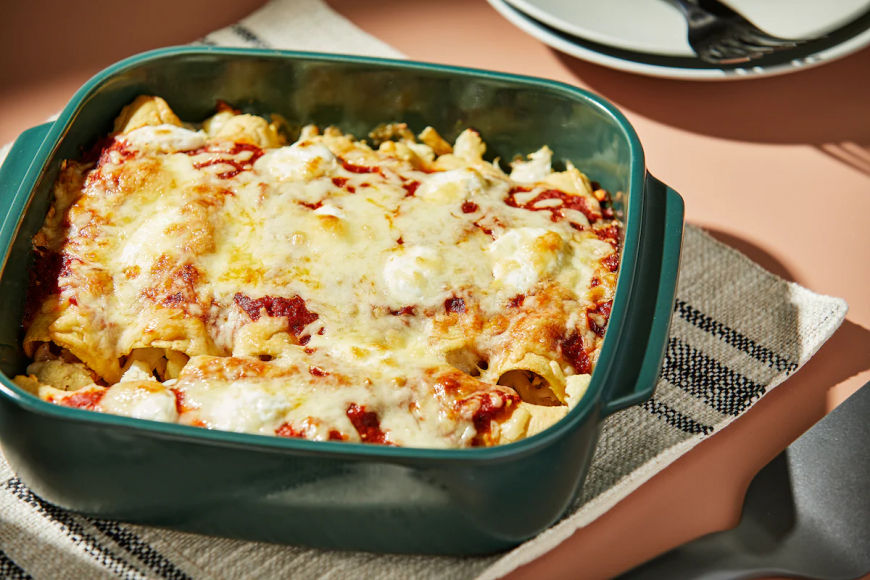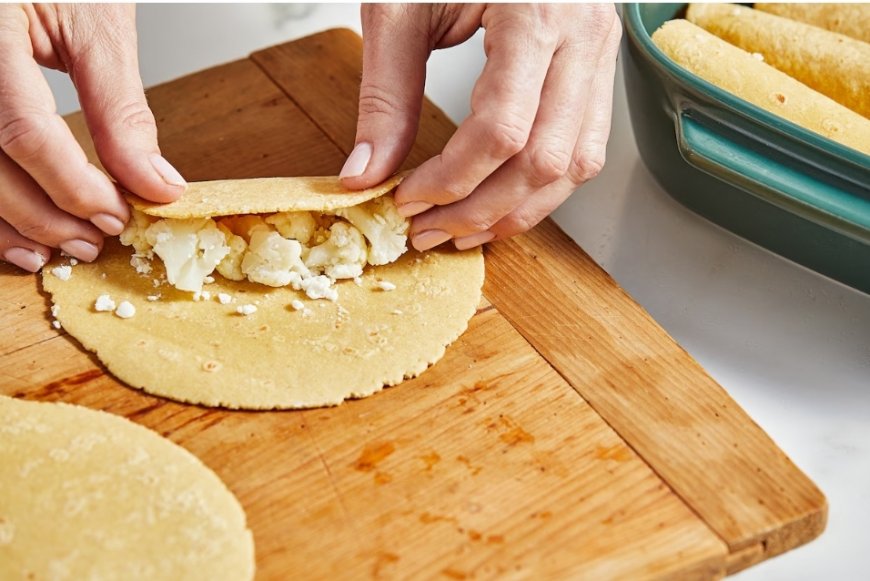Cauliflower enchiladas show the breadth of Mexican vegetarian cooking
Cauliflower enchiladas show the breadth of Mexican vegetarian cooking

Margarita Carrillo Arronte had something to prove when she wrote “The Mexican Vegetarian Cookbook.”
“I saw an opportunity to show to the world that Mexican cuisine is not what many people think: that it is greasy, unhealthy and unbalanced with little variety and excess sugar,” she writes in the introduction. “This is absolutely false and it shows the need to promote our culinary wealth and culture.”
More to the point, perhaps: With her book, a follow-up to the hit “Mexico: A Cookbook” and published last year, the chef and restaurateur writes, “I saw the opportunity to show the deep vegetarian roots that traditional Mexican cuisine has. The further back we go in the history of the region, the more vegetarian the roots of its cuisine become.”
The book is a treasure trove of 400 home-cook-friendly recipes. While classics such as chiles rellenos and tortilla soup appear, Carrillo Arronte also includes such surprises — at least to me — as a fresh fig cake (the fruit arranged like jewels over whipped cream and crispy meringues) and mushrooms roasted in corn husks. The variety and breadth are astounding, even though I do bemoan the absence of headnotes that could illuminate the traditions behind the dishes.
Still, sometimes cooking is the best path to understanding anyhow? I knew the first thing I’d try were the Cauliflower Enchiladas, because those are two of my favorite words in the culinary universe, so I was confident I’d love them. Carrillo Arronte ties them to the state of Chihuahua, and to Mexico’s colonial era, the period starting from 1521 when it was part of the Spanish Empire.
I don’t necessarily associate cauliflower with traditional Mexican cuisine, but that’s apparently my mistake: According to an article in El Restaurante magazine, after Europeans brought cauliflower to the New World, “Spanish friars cultivated it in the monastery gardens of New Spain.” A Mexico City friar’s handwritten cookbook that includes four recipes for cauliflower is dated 1780, according to cookbook author Karen Hursh Graber. Mexico has a much longer history than that, but two and a half centuries of cauliflower is good enough for me.
Anyway, it makes sense: The brassica’s mild flavor is a great foil for the chiles so central to Mexican cooking.
That’s the role it plays in Carrillo Arronte’s enchiladas, combining with feta (or the more traditional cotija, particularly a young one) for a super-simple filling. The rolled and filled tortillas are then bathed in a rich chile sauce and topped with cheese (and dollops of sour cream or crema) before being baked to melty, bubbly perfection. (For the record, dairy products were also brought to Mexico by colonizers.)

If you’ve made enchiladas, you know that the trickiest part can be getting the tortillas to stay intact rather than crack as you roll them. The traditional technique is to quickly fry them in oil before dipping them in the sauce; the oil supposedly offers a barrier that keeps the sauce from soaking into the tortillas and causing them to break apart. I simply haven’t found that to be the case, so instead I spray the tortillas with cooking oil spray, briefly microwave them so they’re pliable enough to roll around the filling, and skip the dipping step. The sauce goes on liberally, and underneath it, the enchiladas are distinct.
If the assembly seems like more than you feel like dealing with, I have to mention another shortcut: Do like my friend Clark, and anytime you see an enchilada recipe, make a layered casserole instead. Treat the tortillas as if they’re lasagna noodles, alternating them with sauce and filling, and you’ll get the pan in the oven that much more quickly.
The Mexico City friar might not have done that in 1780, but something tells me he had more time on his hands, come dinnertime, than I do — and probably you, too.

 Phương Nhung
Phương Nhung 





